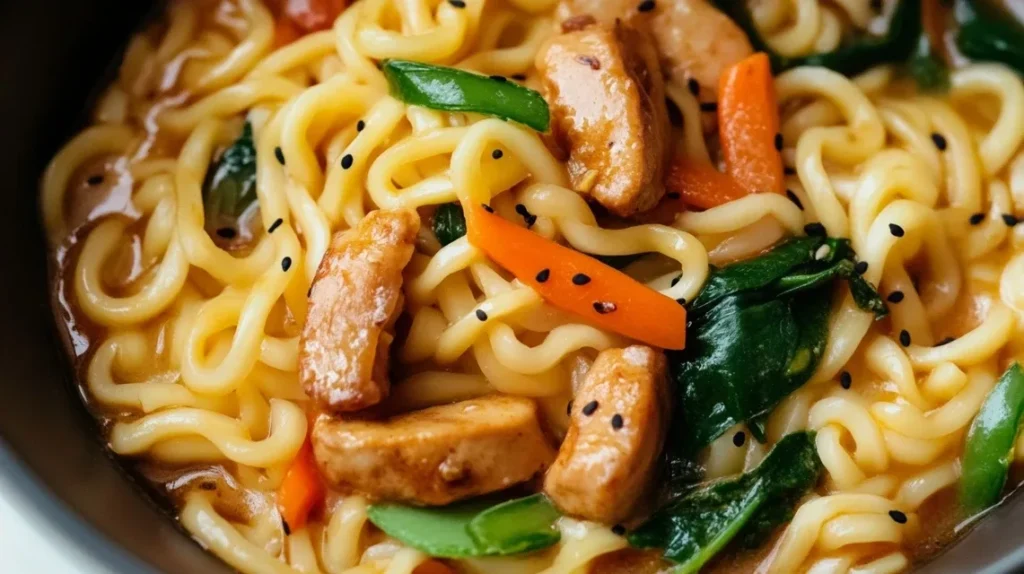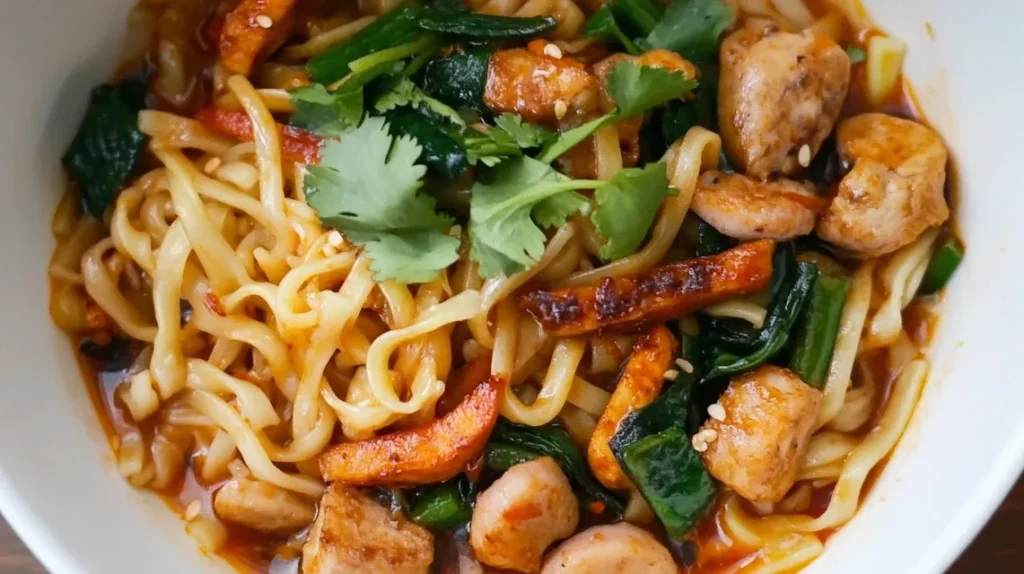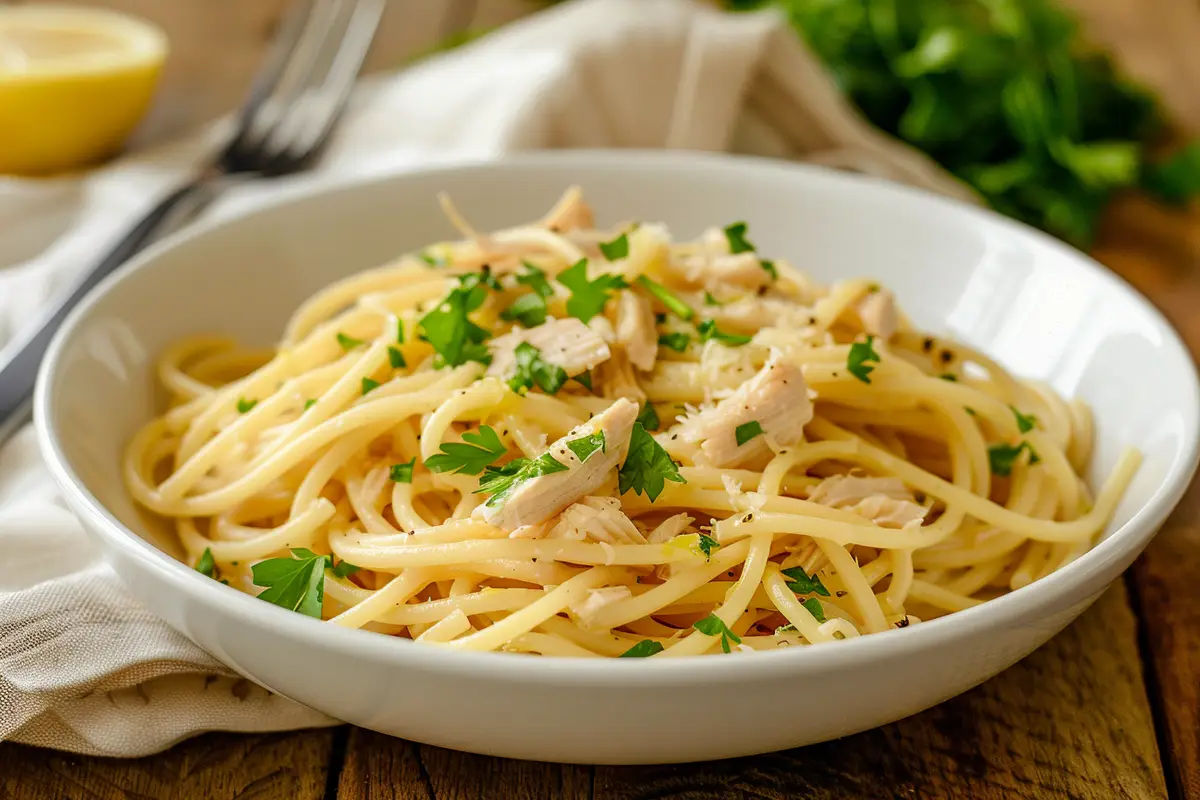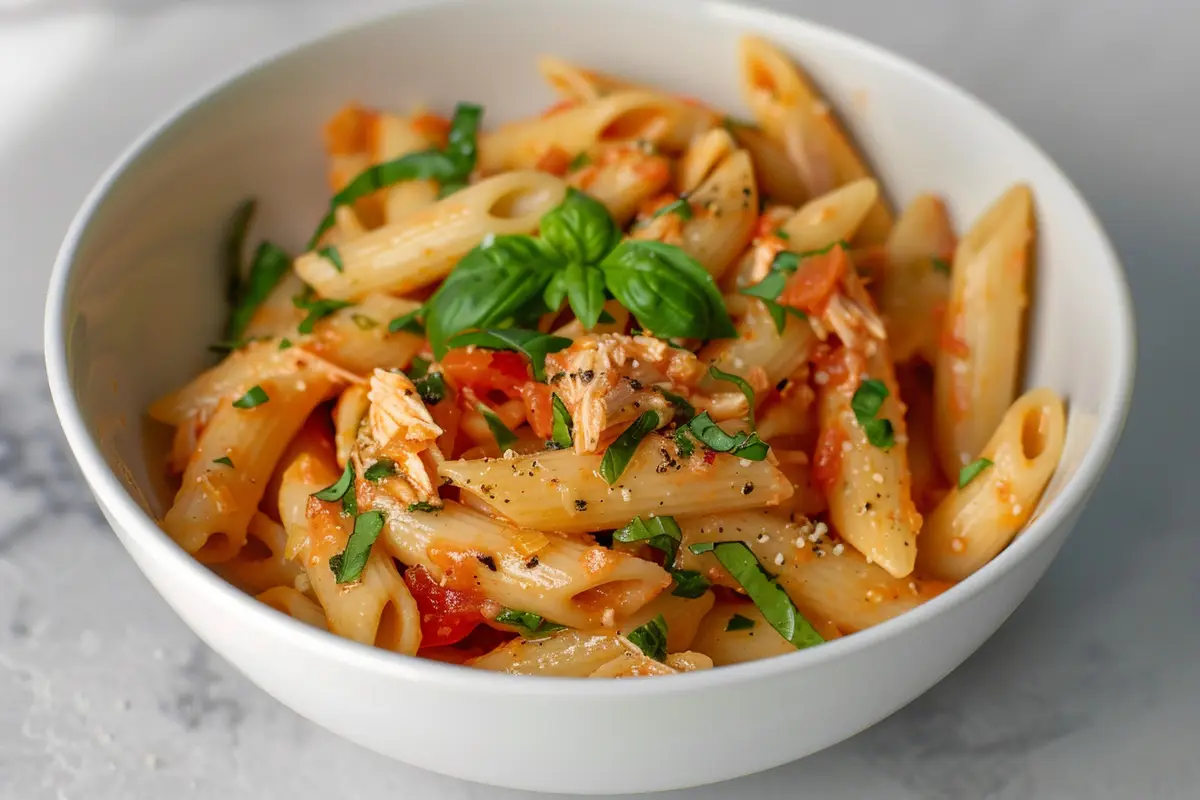Thai Noodle recipes have revolutionized quick and flavorful home cooking. These versatile noodles pair beautifully with a variety of ingredients, from fresh vegetables to proteins like tofu or chicken, creating endless possibilities for delicious meals. If you’re looking for a quick, wholesome dish that doesn’t compromise on taste, you’ve come to the right place. In this guide, we’ll walk you through a classic Thai Wheat Noodle Stir Fry recipe, including tips, tricks, and variations to make it your own.
Table of contents
Why Thai Noodles Are a Must-Have
Convenience Meets Authentic Flavor
Thai noodles are not only convenient but also packed with authentic flavors that make recreating Thai cuisine at home a breeze. They cook in just minutes, absorbing sauces perfectly for a meal that tastes like it came from a high-end restaurant. Additionally, their wheat-based composition offers a slightly chewy texture that elevates the dish’s overall mouthfeel.
These noodles are ideal for both beginners and seasoned home chefs. Whether you’re making a quick weeknight dinner or hosting friends, this recipe fits the bill. Pair these noodles with flavorful sauces, like peanut or sesame, and you’ll quickly see why they’ve become a pantry staple for so many.
Pro Tip: To maximize their versatility, keep an extra pack in your pantry for impromptu meals. They also work wonderfully in recipes like the Ramen Lasagna Recipe, showcasing their adaptability in fusion cuisine.
Ingredients for the Perfect Thai Noodle Stir Fry
Cooking a flavorful dish starts with the right ingredients. Below is a comprehensive list of everything you’ll need to whip up a delicious stir fry in under 30 minutes.
| Ingredient | Amount | Notes |
|---|---|---|
| Thai Noodles | 1 package | Cook according to package directions |
| Crispy Tofu | 1 cup | Use pre-fried tofu or prepare at home |
| Peanut Sauce | ½ cup | Store-bought or homemade |
| Sesame Oil | 2 tbsp | Adds a rich, nutty aroma |
| Garlic, minced | 2 cloves | Use fresh for the best flavor |
| Carrots, julienned | ½ cup | Adds crunch and sweetness |
| Broccoli Florets | 1 cup | Steam lightly to maintain texture |
| Low-Sodium Soy Sauce | 2 tbsp | Balances sweetness in the sauce |
| Crushed Peanuts | 2 tbsp | Optional garnish for added crunch |
This simple yet flavorful ingredient list ensures a balanced dish that’s as healthy as it is tasty.
Step-by-Step Guide to Cooking Thai Noodles
1. Prepping the Ingredients
Before you begin cooking, prepare all your ingredients. This step saves time and ensures a smoother cooking process. Slice carrots thinly, steam broccoli just until tender, and pan-fry tofu cubes to achieve a crispy texture. Set everything aside so that assembly becomes effortless.
2. Cooking the Noodles
Bring a pot of water to a boil, then add Thai Noodles. Cook them for 3-5 minutes or until they’re tender yet firm. Drain the noodles and toss them in a teaspoon of sesame oil to prevent sticking.
Pro Tip: Reserve a half-cup of the noodle-cooking water. This starchy liquid can be used to adjust the consistency of your peanut sauce later.
3. Preparing the Stir Fry Base
Heat a large skillet or wok over medium-high heat. Add sesame oil and minced garlic, stirring until fragrant, about 30 seconds. Then, toss in the steamed broccoli and julienned carrots. Sauté for 2-3 minutes to coat the vegetables in the oil and garlic mixture.
4. Adding the Noodles and Sauce
Once the vegetables are slightly tender, add the cooked noodles to the pan. Pour in the peanut sauce and soy sauce, tossing everything together to ensure an even coating. If the sauce feels too thick, add the reserved noodle water, a tablespoon at a time, until the desired consistency is reached.
Making It Your Own: Customizations and Variations
Thai noodles are highly adaptable, making them perfect for experimentation. Here are some ways to customize your stir fry and explore different flavor profiles.
Protein Options
While crispy tofu is a fantastic plant-based choice, feel free to substitute it with grilled chicken, shrimp, or even chickpeas for a protein boost. Marinate chicken in lime juice and ginger before grilling for a tangy addition that complements the peanut sauce beautifully.

Vegetable Variations
Incorporate your favorite vegetables for added color and nutrition. Snap peas, zucchini, bell peppers, and mushrooms all pair wonderfully with this dish. For an extra pop of freshness, garnish with bean sprouts or cilantro before serving.
Why Peanut Sauce is the Game-Changer
The star of this recipe is undeniably the peanut sauce. Its creamy, nutty richness ties together the flavors of the dish, creating a harmony of sweet, salty, and tangy notes. You can make your own peanut sauce using pantry staples like peanut butter, soy sauce, lime juice, and a touch of honey or brown sugar.
Quick Tip: Add a dash of sriracha for a spicy kick or a teaspoon of rice vinegar for a tangy twist. These small adjustments can elevate the sauce to new heights.
For another recipe featuring bold, comforting flavors, check out these Mini Loaded Baked Potatoes, which serve as an excellent side dish to your stir fry.
Troubleshooting Common Issues
Cooking noodles may seem straightforward, but small mistakes can affect the final dish. Here’s how to avoid common pitfalls:
- Overcooking the Noodles: Keep an eye on the clock when boiling noodles. Overcooked noodles will become mushy and won’t hold the sauce well.
- Sauce Too Thick: If your peanut sauce clings too heavily, use the reserved noodle water to thin it out. Add a tablespoon at a time until the texture feels right.
- Under-seasoned Vegetables: Always season vegetables lightly with salt and pepper before adding them to the stir fry. This step enhances their natural flavors and balances the dish.
Insider Tips for Perfect Stir Fry Every Time
- Use High Heat: Stir-frying is all about quick cooking over high heat. Ensure your skillet is hot before adding ingredients to prevent steaming instead of frying.
- Don’t Overload the Pan: Crowding the pan leads to uneven cooking. Work in batches if necessary.
- Serve Immediately: Stir fry tastes best when served fresh. If you need to reheat leftovers, do so over low heat to retain the dish’s texture.
How to Make Thai Noodles Step-by-Step
5. Garnishing and Serving
Once your noodles are perfectly tossed in the rich peanut sauce with tender-crisp vegetables, the final step is garnishing. Adding toppings enhances both the presentation and flavor of the dish. Crushed peanuts provide a delightful crunch, while freshly chopped cilantro adds a burst of freshness. Don’t forget a squeeze of lime for a tangy kick that balances the dish’s savory elements.
Pro Tip: Thinly slice red chili peppers or drizzle sriracha over the top for a spicy twist. This simple addition is perfect for heat lovers looking to elevate their noodle game.
![Image 4 Placeholder]
6. Storing and Reheating
Storing leftover noodles properly ensures they retain their flavor and texture. Place the stir fry in an airtight container and refrigerate for up to three days. When reheating, opt for a skillet or wok over medium heat instead of a microwave. Add a splash of soy sauce or a tablespoon of water to rehydrate the noodles as they warm.
Pro Tips & Variations
Thai noodle recipes are incredibly versatile, allowing you to experiment with flavors and ingredients to suit your preferences. Here are some creative ideas and pro tips to take your dish to the next level.
Maximizing Flavor with Marinades
Marinating proteins like chicken or shrimp before cooking can significantly enhance the flavor of your stir fry. A quick marinade with lime juice, soy sauce, and minced garlic infuses the meat with bold flavors. Allow at least 15 minutes for the marinade to soak in.
Making It Vegan-Friendly
For a vegan-friendly option, replace the peanut sauce with a tahini-based alternative and substitute tofu for tempeh. Add mushrooms or chickpeas for additional texture and protein. Make sure to check that the soy sauce you’re using is certified vegan.
Exploring Regional Twists
For a creamy Thai curry twist, add a splash of coconut milk to the peanut sauce. This addition pairs beautifully with aromatic ingredients like lemongrass and kaffir lime leaves. Alternatively, incorporate red curry paste for a spicier, more authentic Thai flavor.
![Image 5 Placeholder]
Serving Suggestions
Pair your stir fry with Thai-inspired side dishes for a complete meal. Fresh spring rolls with a peanut dipping sauce or a crunchy cucumber salad complement the noodles perfectly. For dessert, consider mango sticky rice or a light coconut milk pudding.

Thai Wheat Noodle Salad: A Refreshing Take
Thai Wheat Noodle Salad is a fantastic option for those looking for a lighter, refreshing meal. Using Thai wheat noodles as a base, this dish combines fresh vegetables, a zesty dressing, and optional protein for a satisfying yet health-conscious meal. The noodles are fully cooked and chilled before being tossed with the sauce ingredients, ensuring the flavors meld perfectly.
Ingredients You’ll Need
- Thai wheat noodles: 1 package
- Fresh vegetables: julienned carrots, cucumber, and red cabbage
- Protein: grilled chicken breast, tofu, or shrimp
- Dressing: lime juice, toasted sesame oil, and low-sodium soy sauce
- Toppings: crushed peanuts and chopped cilantro
How to Make This Recipe
- Cook the Noodles: Prepare the wheat noodles from according to package instructions. Rinse under cold water and drain thoroughly to stop the cooking process.
- Prepare the Dressing: In a bowl, whisk together lime juice, sesame oil, and soy sauce. Adjust seasoning with salt and pepper as needed.
- Assemble the Salad: In a large bowl, toss the noodles, fresh vegetables, and dressing until everything is evenly coated. Top with crushed peanuts and cilantro.
- Serve and Enjoy: Chill for at least 10 minutes before serving. This step allows the noodles to soak up the sauce for maximum flavor.
Pro Tip: Add the wheat noodles just before serving to maintain their ideal texture.
![Image Placeholder for Thai Wheat Noodle Salad]
Thai Wheat Noodle Soup Recipe
If you’re a fan of hearty and comforting soups, give this Thai Wheat Noodle Soup Recipe a try. This dish is perfect for chilly evenings or when you’re in the mood for something warm and soothing.
Why You’ll Love for This Recipe
Using Thai wheat noodles simplifies the preparation process while delivering great flavor. The noodles are already pre-portioned, making it easy to whip up a bowl of noodle soup without any hassle.
Steps to Prepare
- Prepare the Broth: Start by sautéing minced garlic in sesame oil over medium-high heat in a large cooking pan. Add chicken broth, coconut milk, and a dollop of peanut satay sauce for a creamy, flavorful base.
- Add Protein and Veggies: Incorporate cooked chicken breast, sliced mushrooms, and spinach into the broth. Let simmer for 5 minutes.
- Cook the Noodles: Add the Thai wheat noodles from directly into the soup. Let them simmer until they are fully softened.
- Serve Hot: Garnish with lime wedges and fresh herbs like cilantro or Thai basil. Enjoy a hearty, flavorful meal in minutes!
Creative Recipes Using Products
Stir Fry Noodles with Ginger Lime Chicken Thighs
This recipe is an easy way to transform a box of these noodles into a gourmet meal. The combination of stir-fried noodles and marinated ginger lime chicken thighs creates a dish full of bold, vibrant flavors.
Steps:
- Marinate chicken thighs with lime juice, ginger, and soy sauce for 1 hour.
- Sear the chicken over medium-high heat until fully cooked. Remove chicken from the pan and set aside.
- Stir fry the Thai wheat noodles with a mix of vegetables and sauce ingredients. Toss with the cooked chicken and serve immediately.
Peanut Noodle Sauce with Udon Noodles
Although this guide focuses on Thai wheat noodles, you can also experiment with other noodle varieties, like udon noodles. A rich peanut noodle sauce pairs wonderfully with the chewy texture of udon.
FAQ
How to cook Thai noodles without a microwave?
Cooking these noodles without a microwave is straightforward. Boil water in a saucepan, add the noodles, and cook for 3-5 minutes. Afterward, drain and toss with a small amount of sesame oil to prevent clumping.
Are Thai noodles made of wheat?
Yes, Thai noodles are wheat-based, giving them a hearty and chewy texture. This is different from rice noodles, which are lighter and more delicate.
How much are Thai wheat noodles?
The noodles are affordably priced, typically ranging between $2.99 and $4.99, depending on your location.
What is the most popular noodle dish in Thailand?
Pad Thai is the most iconic Thai noodle dish, loved for its harmonious blend of sweet, tangy, and savory flavors. It’s often garnished with crushed peanuts and lime wedges.
How long do you boil noodles?
Boil the noodles for 3-5 minutes. Keep an eye on them to ensure they retain their chewy texture and don’t overcook.
Can you cook noodles without boiling them?
Yes, you can cook noodles without boiling by soaking them in hot water for about 15 minutes. However, this method is best suited for thinner noodles, as it may leave wheat noodles undercooked.
Conclusion
Thai noodle recipes are a delightful way to bring the vibrant flavors of Thailand into your home kitchen. From their quick cooking time to their adaptability to different ingredients and sauces, these noodles are a staple for anyone who loves flavorful, healthy meals. By following this guide, you can create restaurant-quality dishes that are both satisfying and easy to prepare. Whether you stick to the classic recipe or explore creative variations, these noodles will never disappoint.
Want to see more? If you enjoyed this article, we invite you to join us on our Facebook page ElyseRecipes. That way, you’ll be among the first to hear about our updates, cooking tips, and recipe ideas! Come share your passion and connect with our community.







